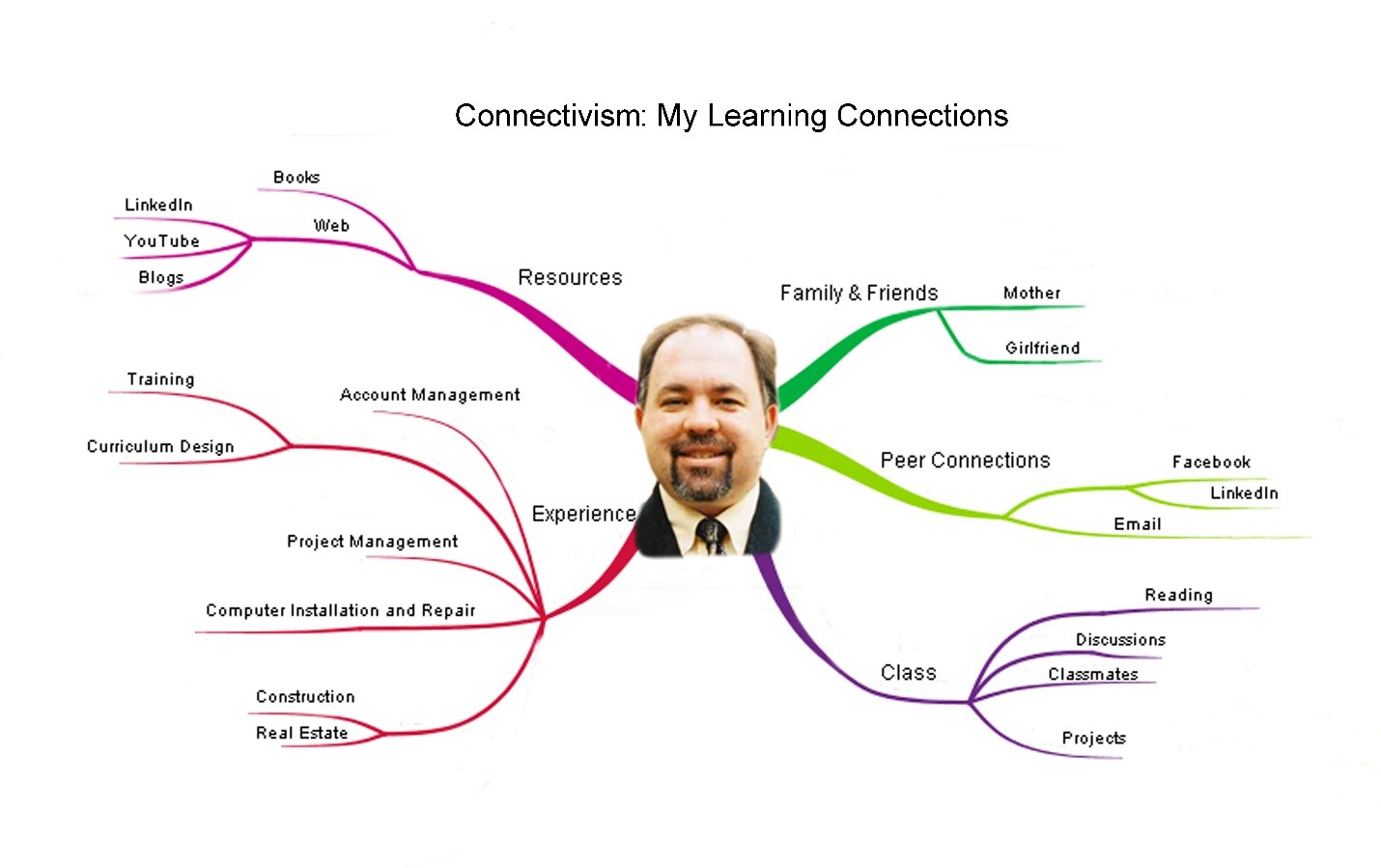
My Mindmap shows my connectivism with my learning resources. Which parts of the map and how much of my resources I use depends on the subject, my past experience in the subject, and the complexity of the problem I need to solve. If the problem is construction oriented I might use my experience, books on the subject and the internet. If it’s a question about education or training I might use my experience combined with discussions from my professional connections on LinkedIn, I might email some of my close associates or discuss the issue with my girlfriend Debbie who is working on her Doctorate in Education. In an effort to increase my knowledge and experience I recently decided to further my education and knowledge in Curriculum Design Technology by going for my Masters which opened up a new branch on my Mindmap to include new reading, discussions with classmates on their experiences, and projects that can lead to my better understanding the subject, which I hope will over the long run increase my experience and lead to greater cognitive understanding.
The digital tools that have served me best in facilitating my learning are mainly internet based. I must admit that I love using Wikipedia even though I know it may be inaccurate. Still, it’s where I usually start my search on a subject. From there I will often go to YouTube (I’m very much a visual learner), as I like the ability to see the subject in action and then I will access details from specific websites where I can get the technical specs, details and specific metrics. For example; I wanted to build a new deck on my house. Wikipedia gave some basic terminology and some references that I could get additional information from. Then I watched several YouTube videos of decks being built, and after I understood the process I went to specific websites where I could get the local building codes and architectural requirements such as what size beams and how far apart they would need to be placed.
My personal learning network supports the central tenets of connectivism. “According to Siemens, connectivism is driven by the understanding that decisions are based on rapidly altering foundations. New information is continually being acquired and the ability to draw distinctions between important and unimportant information is vital. By using these networks – of people, of technology, of social structures, of systems, of power grids, etc. – learning communities can share their ideas with others, thereby ‘cross-pollinating’ the learning environment.’” (Davis, Edmunds, & Kelly-Bateman, 2008, Connectivism)
Reference
Davis, C., Edmunds, E., & Kelly-Bateman, V. (2008). Connectivism. In M. Orey (ed.). Emerging perspectives on learning, teaching, and technology. Retrieved from http://epltt.coe.uga.edu/index.php?title=Connectivism